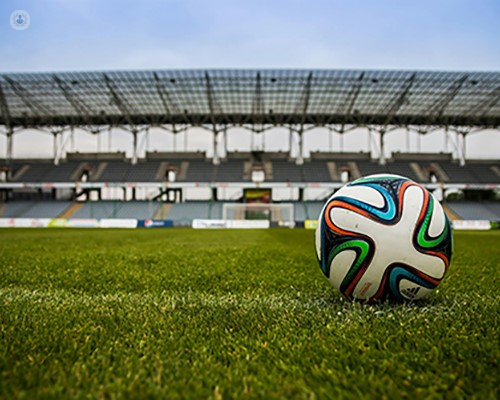Essential information about sports injuries
Escrito por:Participating in sports is a fantastic way to stay fit, develop teamwork skills, and enjoy recreational time. However, it also carries the risk of injuries, ranging from minor sprains to severe fractures. In his latest article, Mr Amit Vats aims to provide you with essential information about common sports injuries, their causes, and how they can be managed.

Common types of sports injuries
Sprains and strains
Sprains involve the overstretching or tearing of ligaments, which are the tough bands of fibrous tissue connecting bones at joints. Ankle sprains are particularly common in sports. Strains, on the other hand, affect muscles or tendons, the fibrous cords that attach muscles to bones. These injuries often occur when the muscle is overstretched or overused.
Fractures and dislocations
Fractures are breaks in the bone, which can be caused by a sudden impact or stress. Common sports-related fractures include broken wrists, arms, and legs. Dislocations happen when the bones in a joint are pushed out of their usual alignment. Shoulder dislocations are frequent in contact sports like rugby and football.
Tendinitis
Tendinitis is the inflammation of a tendon, often due to repetitive motion or overuse. It commonly affects the shoulders, elbows (often referred to as "tennis elbow"), wrists, and knees. Symptoms include pain, swelling, and limited movement in the affected area.
Concussions
Concussions are a type of traumatic brain injury caused by a blow to the head or body, leading to rapid movement of the brain inside the skull. This can result in headaches, dizziness, confusion, and even loss of consciousness. Sports such as football, boxing, and hockey carry a higher risk of concussions.
Causes of sports injuries
Sports injuries can happen for several reasons, including:
- Poor training practices: Not warming up properly, overtraining, or using incorrect techniques can increase the risk of injury.
- Inadequate equipment: Using worn-out or inappropriate equipment, such as ill-fitting shoes, can lead to injuries.
- Environmental factors: Playing on uneven surfaces or in adverse weather conditions can contribute to accidents and injuries.
- Personal factors: Age, previous injuries, and physical condition also play a significant role in the likelihood of sustaining an injury.
Managing sports injuries
Immediate care
The RICE method (Rest, Ice, Compression, and Elevation) is a widely-recommended first aid treatment for many sports injuries. Rest the injured area, apply ice to reduce swelling, use a compression bandage, and elevate the injury above heart level.
Medical attention
For severe injuries, it is crucial to seek medical attention promptly. A healthcare professional may recommend imaging tests such as X-rays or MRI scans to diagnose the injury accurately. Treatment might include medication, physical therapy, or in some cases, surgery.
Rehabilitation
Rehabilitation is vital for recovery and preventing future injuries. A structured rehabilitation programme designed by a physiotherapist can help restore strength, flexibility, and function. It is essential to follow the prescribed exercises and not rush the recovery process.
Understanding sports injuries, their causes, and management can significantly aid in your recovery and prevent future issues. Always consult with a healthcare professional for personalised advice and treatment plans tailored to your specific needs.
Mr Amit Vats is an esteemed orthopaedic surgeon. You can schedule an appointment with Mr Vats on his Top Doctors profile.


